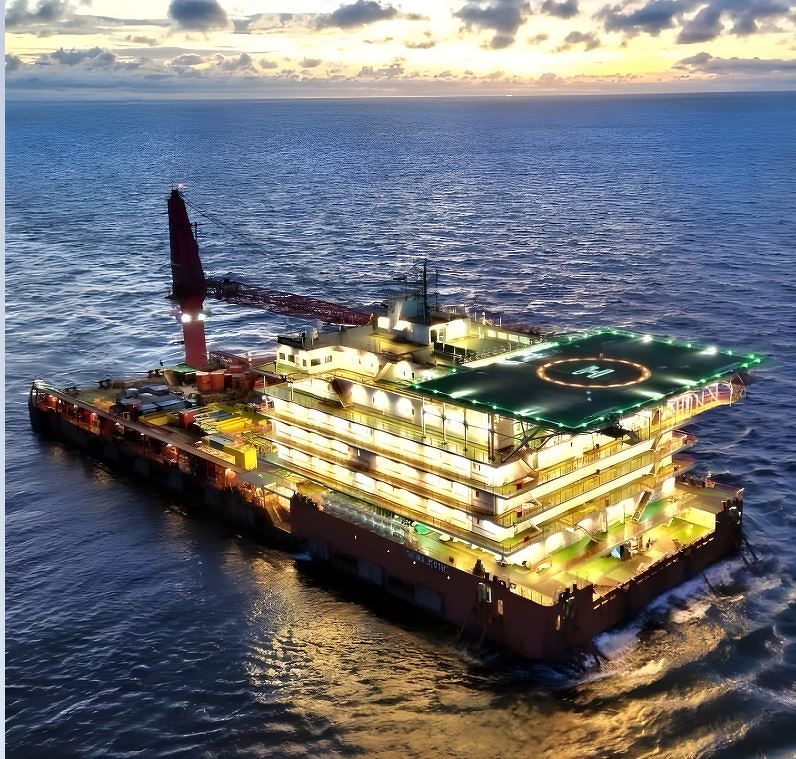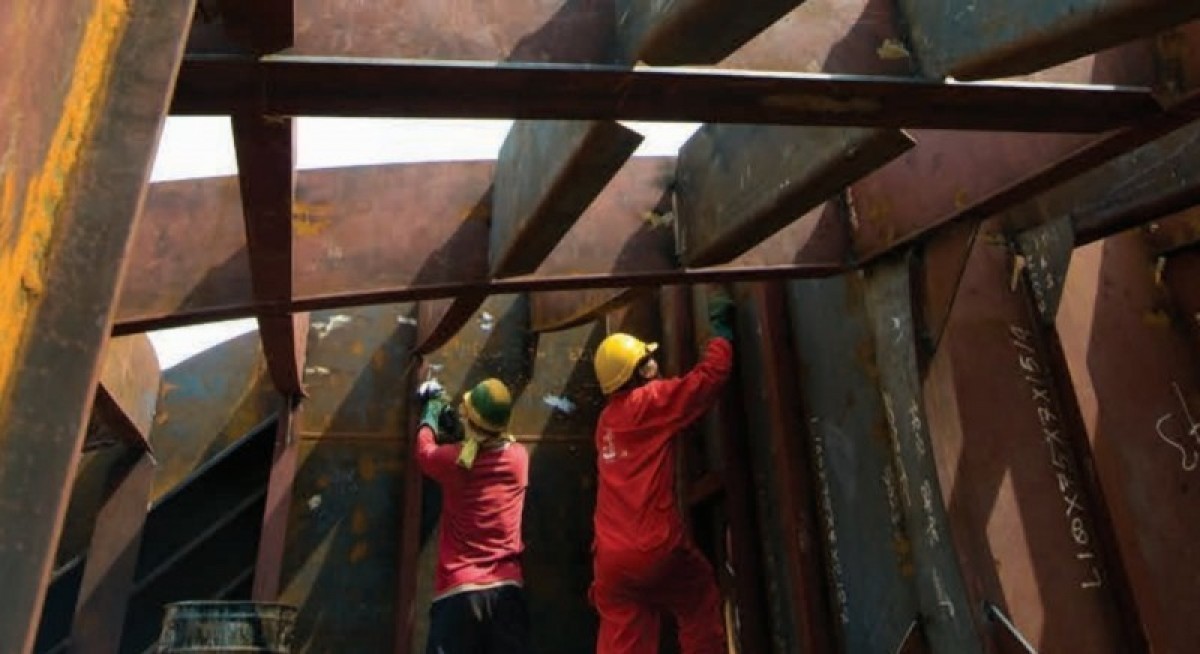See also: A rejuvenated Singapore market, a reset for The Edge Singapore
See also: From momentum to transformation: Building a relevant stock market
 Opportunities in a tightening market
Industry dynamics are now tilting in Nam Cheong’s favour. Supply growth of new OSVs has been sluggish in recent years, with banks reluctant to finance newbuilds and environmental, social and governance (ESG) requirements further tightening credit access.
Opportunities in a tightening market
Industry dynamics are now tilting in Nam Cheong’s favour. Supply growth of new OSVs has been sluggish in recent years, with banks reluctant to finance newbuilds and environmental, social and governance (ESG) requirements further tightening credit access.
 Not giving up on shipbuilding
Despite its transformation into a chartering-led group, Nam Cheong has not walked away from its shipbuilding roots. It still maintains a minimum level of shipbuilding activity in its Sarawak yard.
It anticipates a resurgence in newbuild orders as global offshore energy activities pick up, driven not only by traditional oil and gas projects but also by offshore renewables and the ageing of existing OSVs across the industry.
The average age of OSVs worldwide will soon approach the 20-year limit set by some oil majors, notes Leong. “That will render many vessels ineligible for chartering. This is expected to cause an acute surge in demand for newbuilds, presenting a golden opportunity for OSV builders like us.”
Interestingly, US tariffs and fees on Chinese-built-and-operated ships could also tilt the playing field. “This presents a positive development for Nam Cheong,” he adds.
“None of the OSVs we delivered have been deployed in the US, so the proposed port fees have no direct impact. Instead, it may create more opportunities for us as customers look to build vessels outside China.”
A stronger balance sheet
One of the most striking aspects of Nam Cheong’s revival story is how much stronger its finances are today compared to the pre-crisis years. Under its seven-year debt restructuring master agreement, concluded in 2024, the company has methodically deleveraged and rebuilt its capital base.
As of end-1H2025, its net gearing was about 57%, a level it deems healthy. “Our approach to gearing is flexible and aligned with maintaining financial resilience and operational stability,” Leong says. “The focus remains on prudent balance sheet management to support ongoing fleet deployment, long-term charter coverage, and strategic growth initiatives.”
Those efforts are paying off. The group has returned to profitability, generating sustainable cash flows from chartering while waiting for the right time to re-enter shipbuilding more aggressively.
Even as the company rebuilds, Leong remains realistic about the global uncertainties ahead. Nam Cheong’s guiding philosophy now emphasises agility and prudence, he says.
“We’re constantly reprofiling our fleet by adding new vessels and disposing of those that are less competitive. This ensures our fleet remains relevant, competitive and in demand.”
A measured approach is also evident in its business mix. After the painful lessons of 2014-2017, Nam Cheong no longer chases speculative opportunities. “As build-to-stock carries a higher risk profile, our board now prefers the build-to-order approach to balance growth with prudent risk management,” he says.
Steady course, clearer horizon
Nam Cheong’s turnaround over the past decade has been hard-won. From a shipyard once teetering on the brink of collapse, it has reinvented itself as a leaner, more disciplined player anchored by recurring charter income and supported by a sounder balance sheet.
Its message to shareholders is one of confidence and strategic foresight. “Despite the difficulties of recent years, we have demonstrated remarkable resilience and progress, as evidenced by our record-breaking charter wins and significant revenue growth,” Leong says.
The focus now is to sustain this growth trajectory. The company that once rose — and nearly imploded — with oil prices is now charting a more predictable course, grounded in operational discipline rather than market exuberance. Its rebound marks a fundamental recalibration of how value is built and sustained in a cyclical industry.
Not giving up on shipbuilding
Despite its transformation into a chartering-led group, Nam Cheong has not walked away from its shipbuilding roots. It still maintains a minimum level of shipbuilding activity in its Sarawak yard.
It anticipates a resurgence in newbuild orders as global offshore energy activities pick up, driven not only by traditional oil and gas projects but also by offshore renewables and the ageing of existing OSVs across the industry.
The average age of OSVs worldwide will soon approach the 20-year limit set by some oil majors, notes Leong. “That will render many vessels ineligible for chartering. This is expected to cause an acute surge in demand for newbuilds, presenting a golden opportunity for OSV builders like us.”
Interestingly, US tariffs and fees on Chinese-built-and-operated ships could also tilt the playing field. “This presents a positive development for Nam Cheong,” he adds.
“None of the OSVs we delivered have been deployed in the US, so the proposed port fees have no direct impact. Instead, it may create more opportunities for us as customers look to build vessels outside China.”
A stronger balance sheet
One of the most striking aspects of Nam Cheong’s revival story is how much stronger its finances are today compared to the pre-crisis years. Under its seven-year debt restructuring master agreement, concluded in 2024, the company has methodically deleveraged and rebuilt its capital base.
As of end-1H2025, its net gearing was about 57%, a level it deems healthy. “Our approach to gearing is flexible and aligned with maintaining financial resilience and operational stability,” Leong says. “The focus remains on prudent balance sheet management to support ongoing fleet deployment, long-term charter coverage, and strategic growth initiatives.”
Those efforts are paying off. The group has returned to profitability, generating sustainable cash flows from chartering while waiting for the right time to re-enter shipbuilding more aggressively.
Even as the company rebuilds, Leong remains realistic about the global uncertainties ahead. Nam Cheong’s guiding philosophy now emphasises agility and prudence, he says.
“We’re constantly reprofiling our fleet by adding new vessels and disposing of those that are less competitive. This ensures our fleet remains relevant, competitive and in demand.”
A measured approach is also evident in its business mix. After the painful lessons of 2014-2017, Nam Cheong no longer chases speculative opportunities. “As build-to-stock carries a higher risk profile, our board now prefers the build-to-order approach to balance growth with prudent risk management,” he says.
Steady course, clearer horizon
Nam Cheong’s turnaround over the past decade has been hard-won. From a shipyard once teetering on the brink of collapse, it has reinvented itself as a leaner, more disciplined player anchored by recurring charter income and supported by a sounder balance sheet.
Its message to shareholders is one of confidence and strategic foresight. “Despite the difficulties of recent years, we have demonstrated remarkable resilience and progress, as evidenced by our record-breaking charter wins and significant revenue growth,” Leong says.
The focus now is to sustain this growth trajectory. The company that once rose — and nearly imploded — with oil prices is now charting a more predictable course, grounded in operational discipline rather than market exuberance. Its rebound marks a fundamental recalibration of how value is built and sustained in a cyclical industry.








.jpg)

